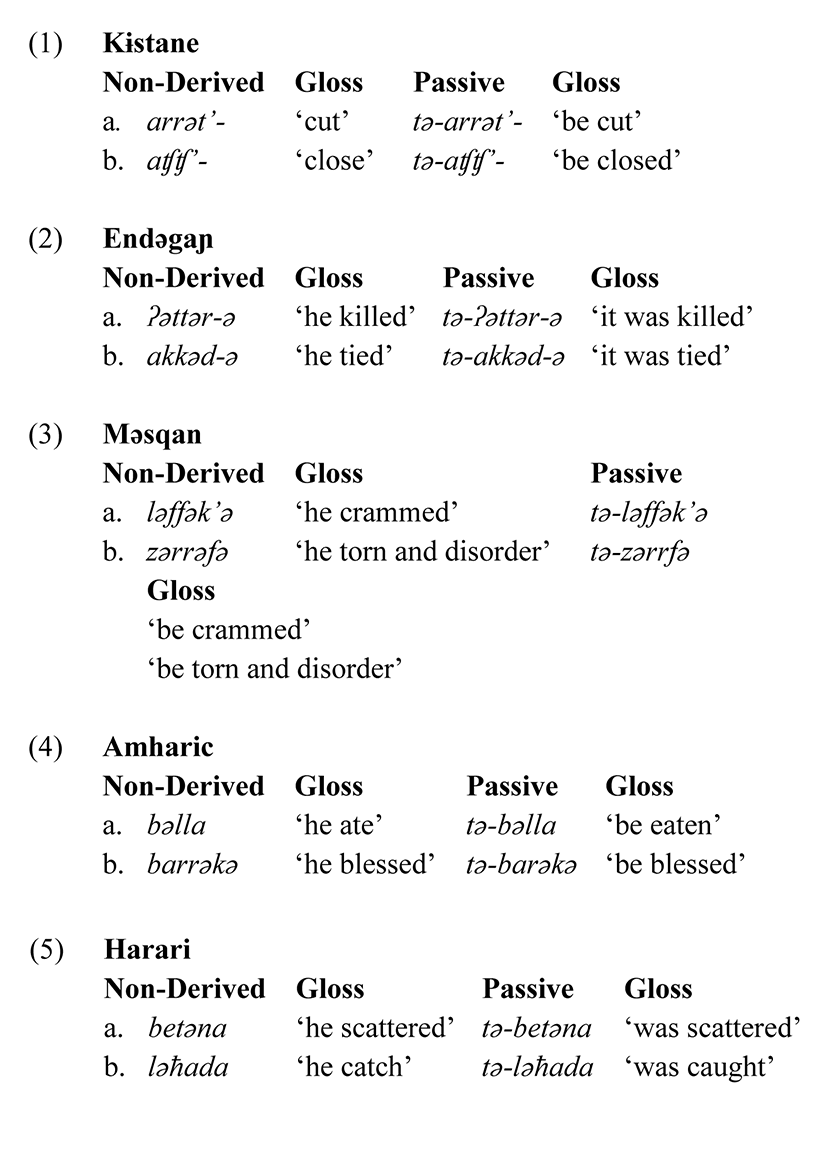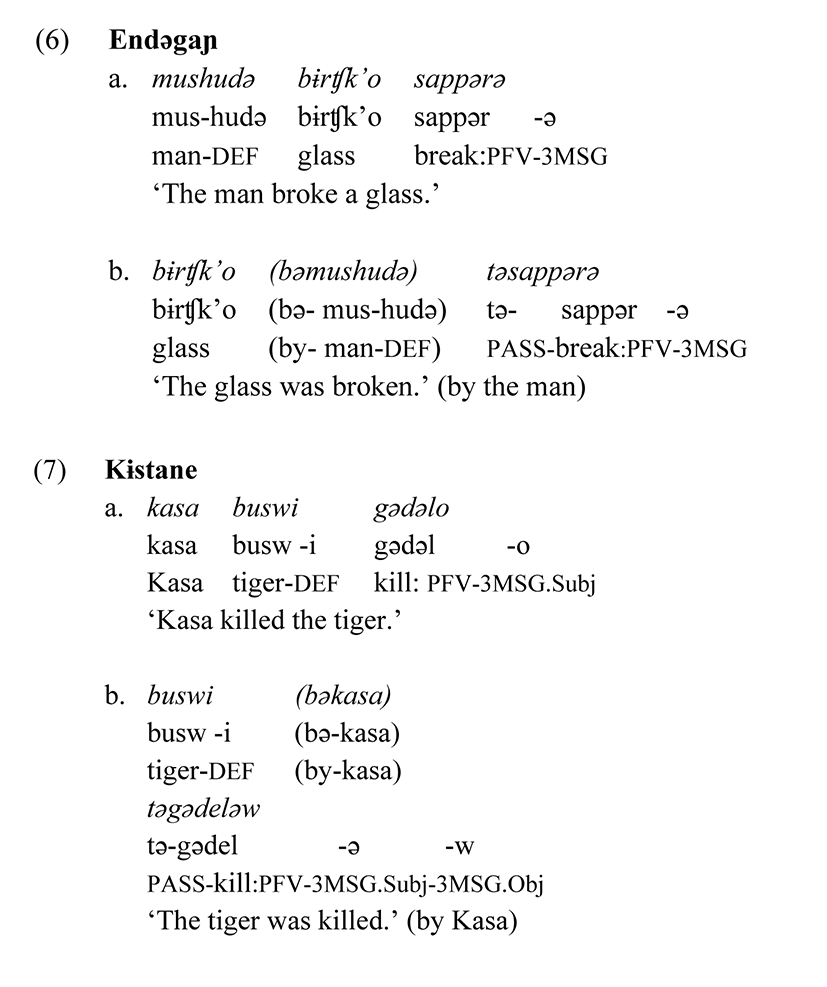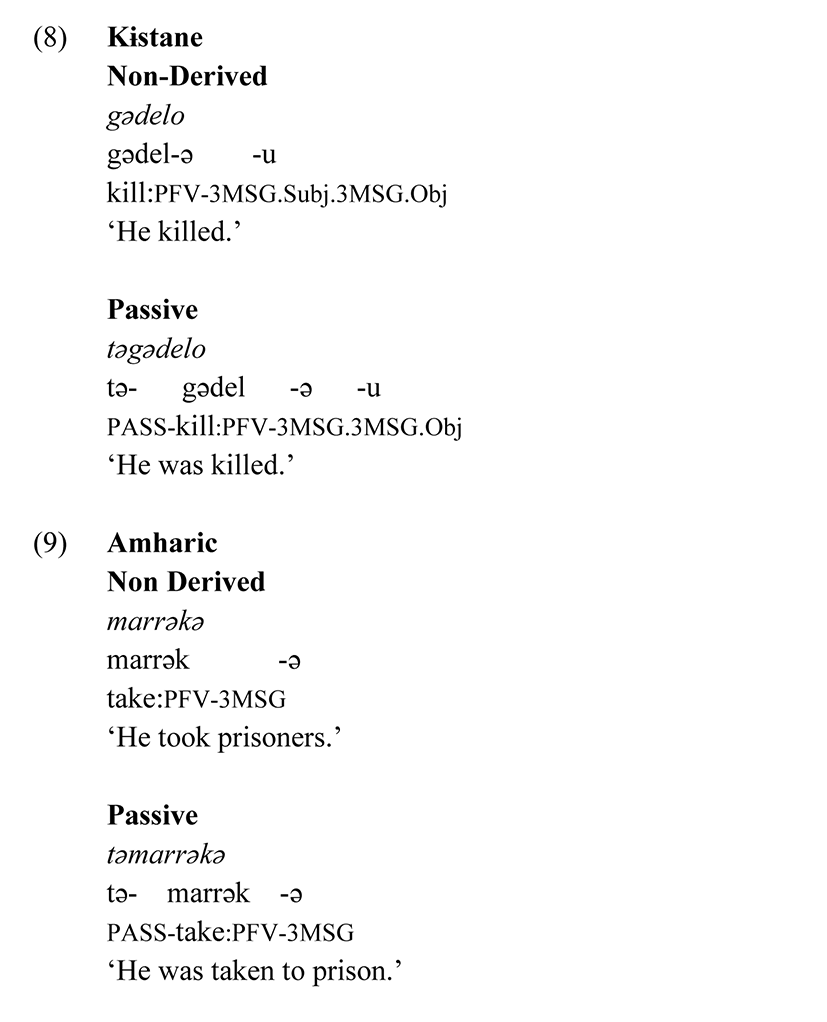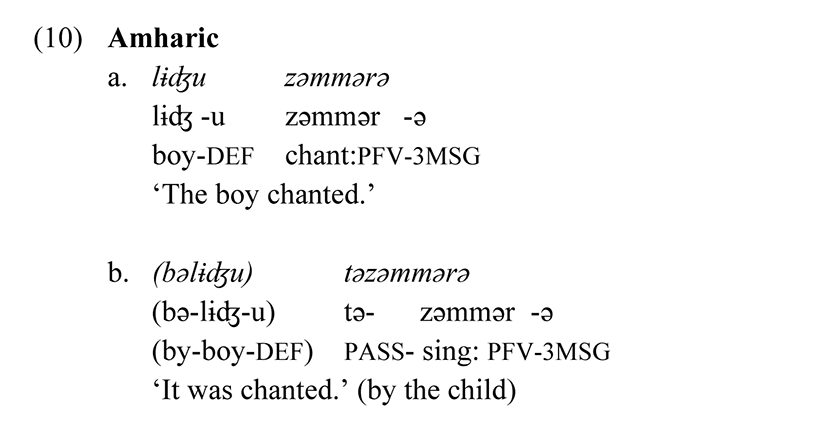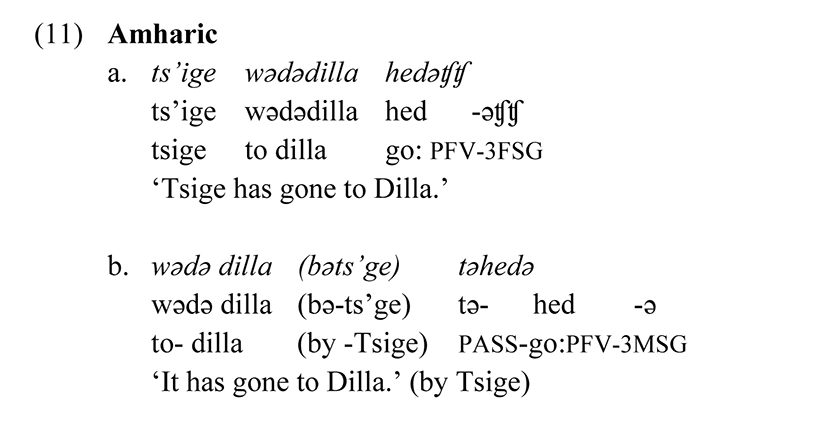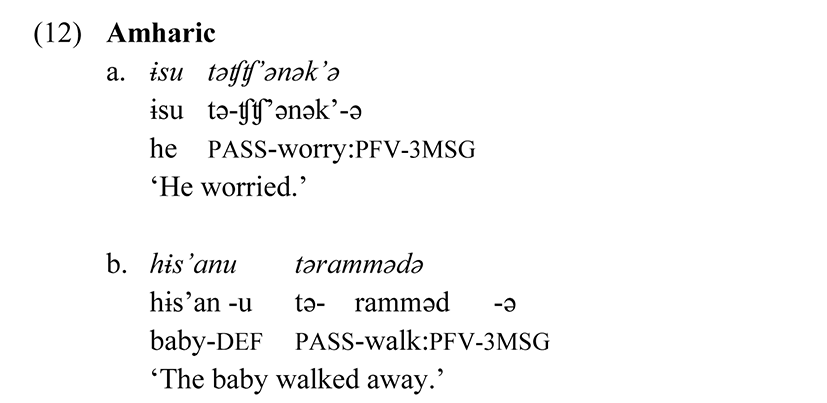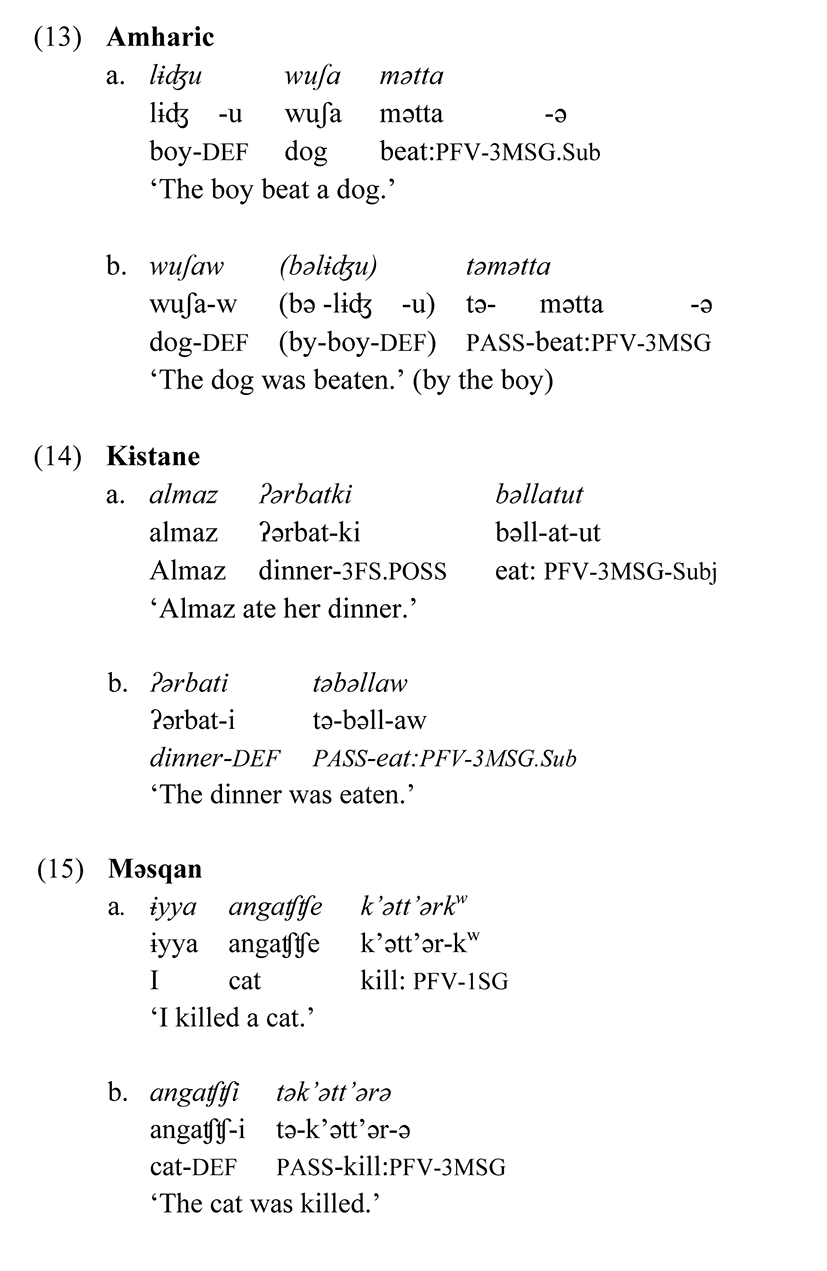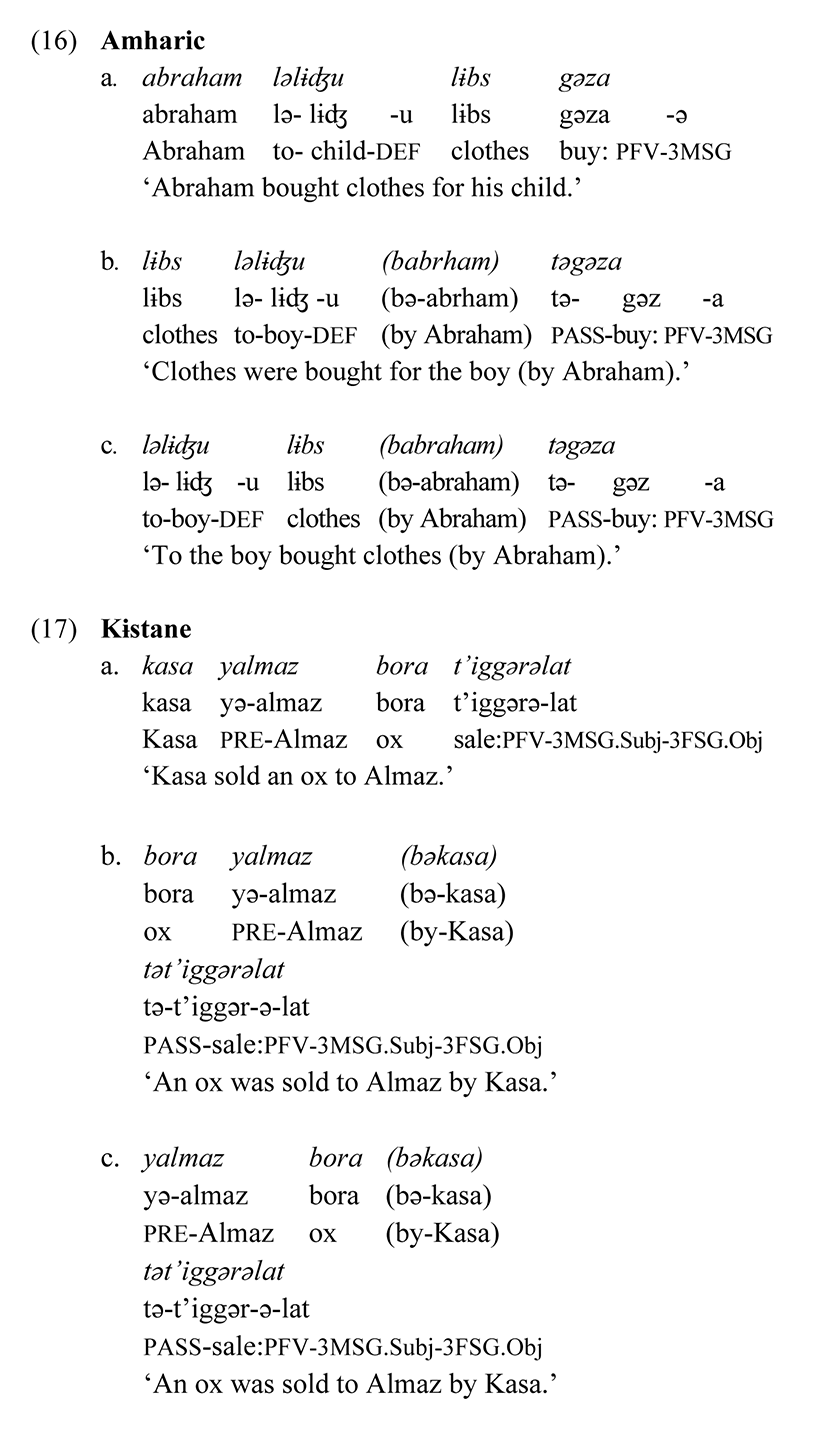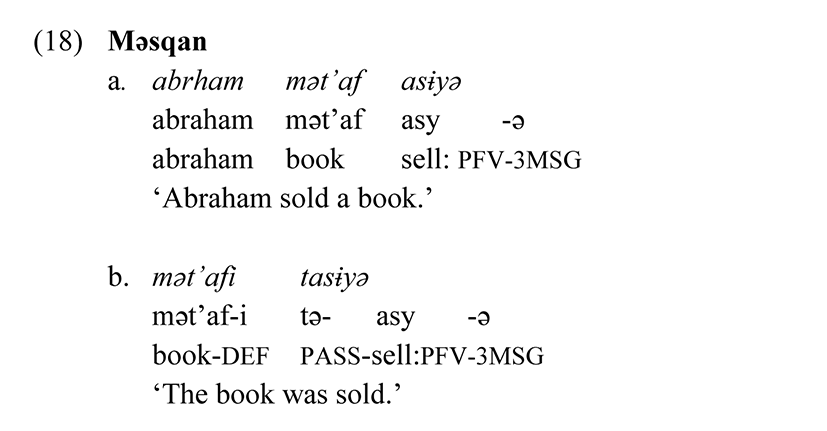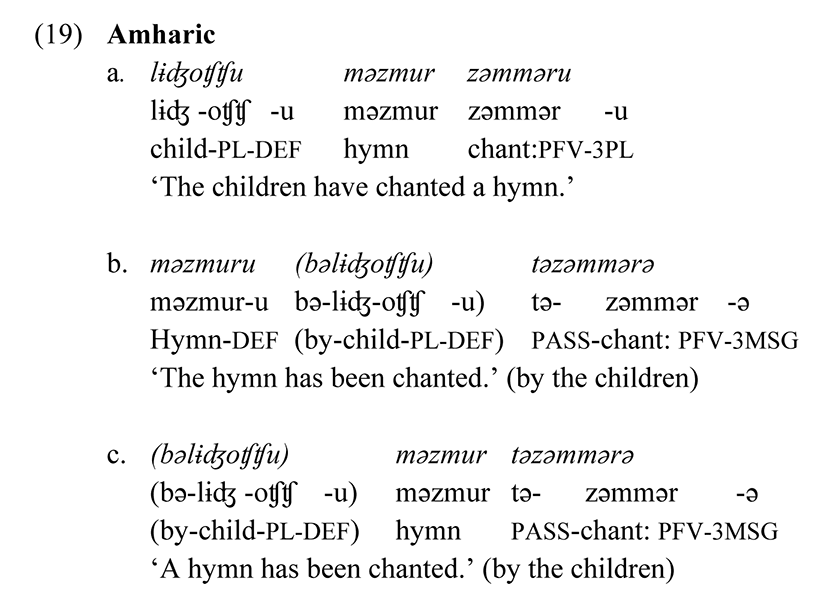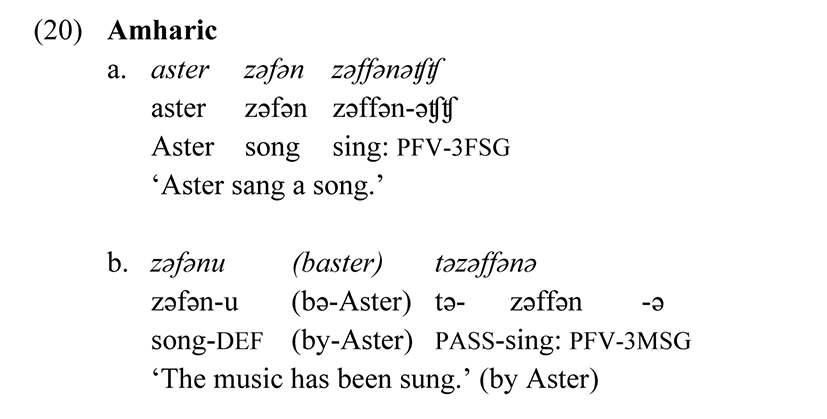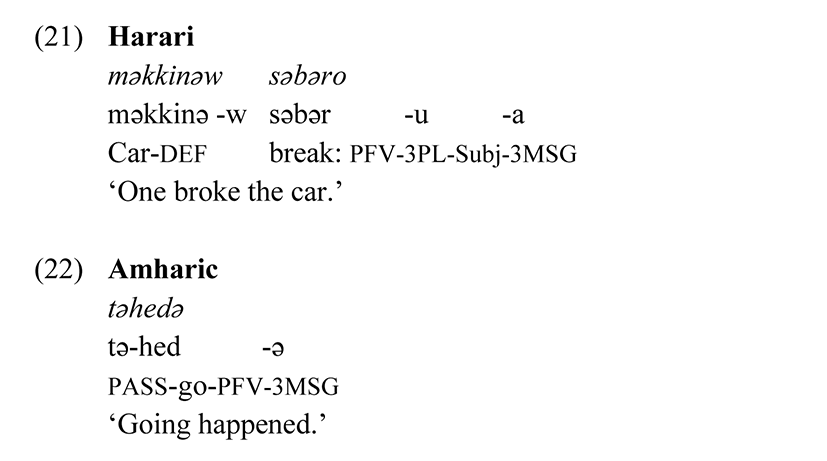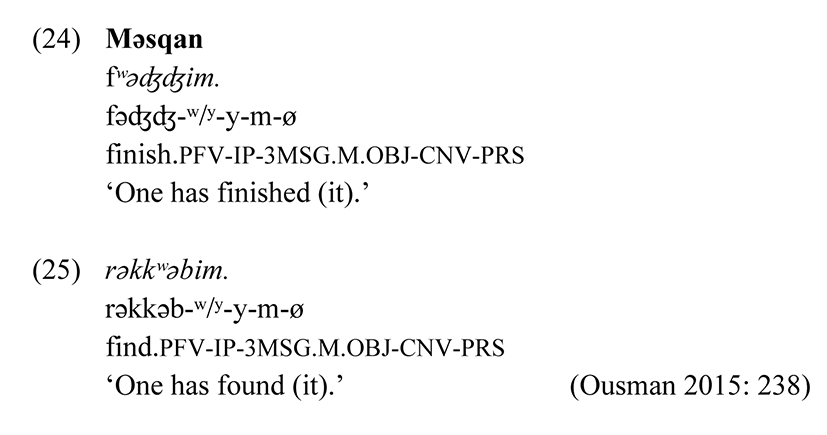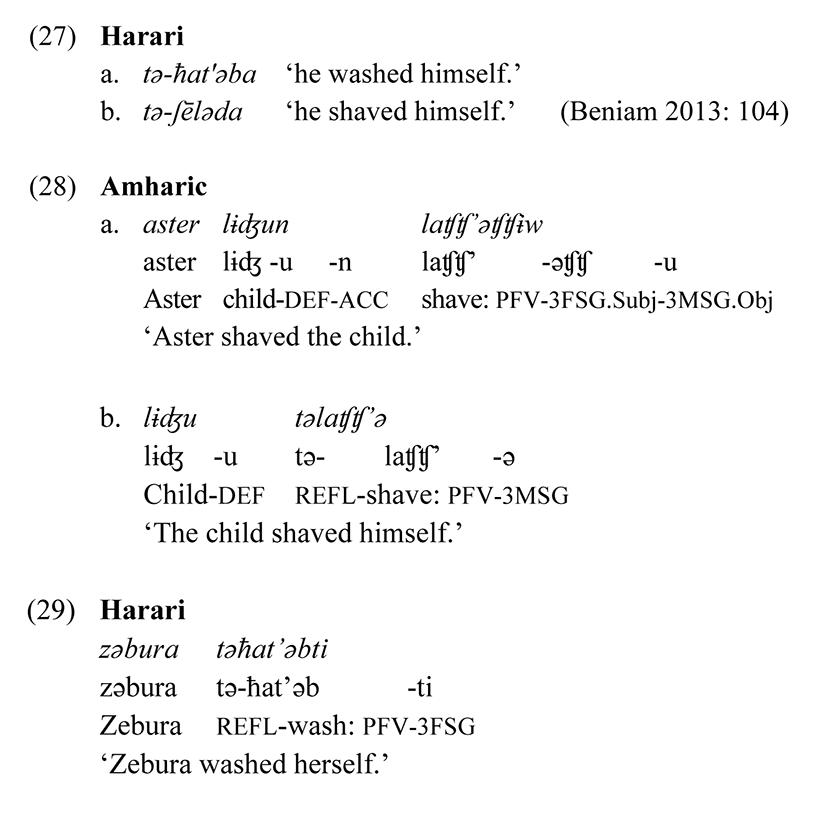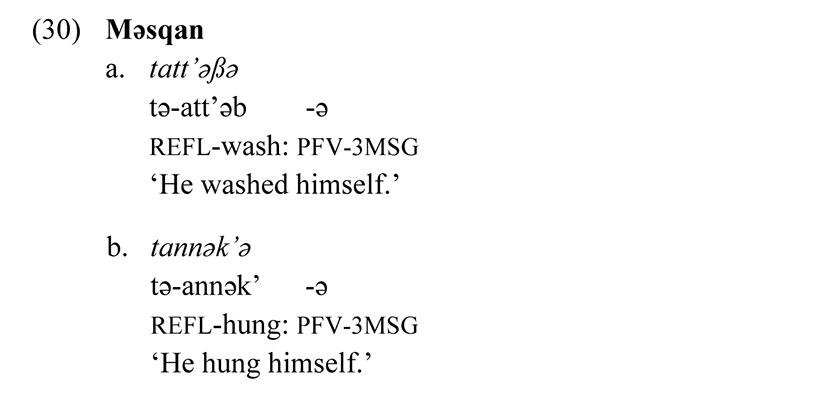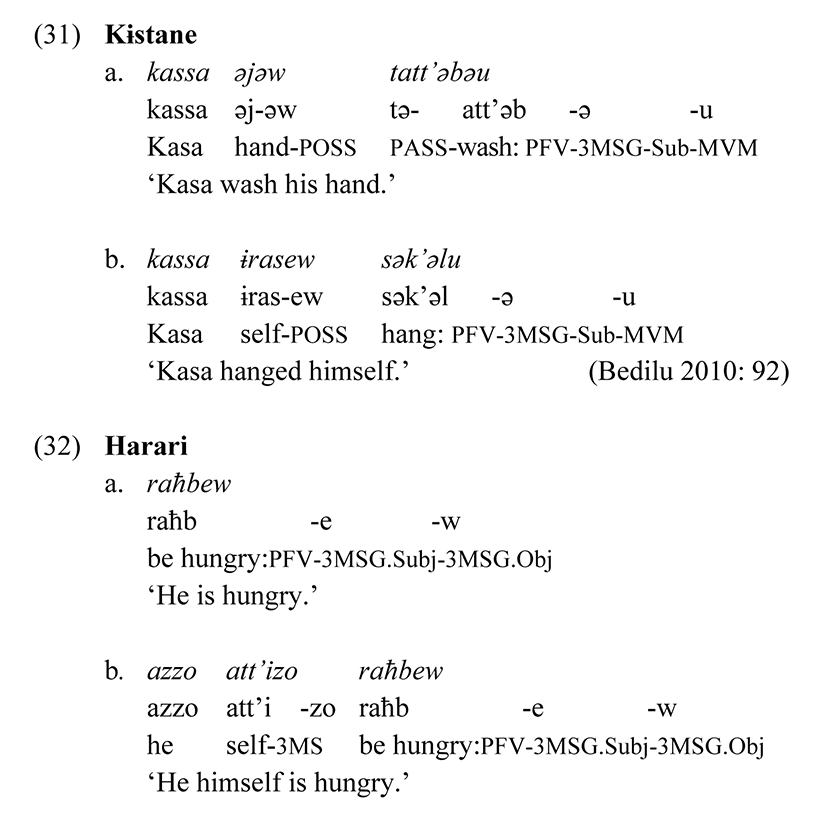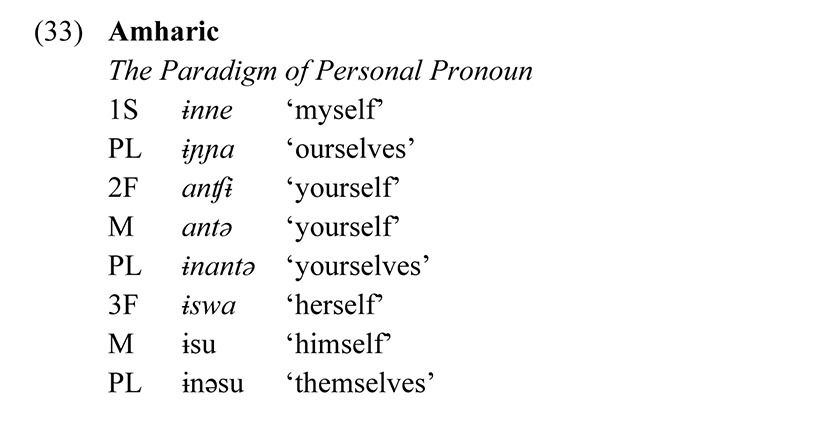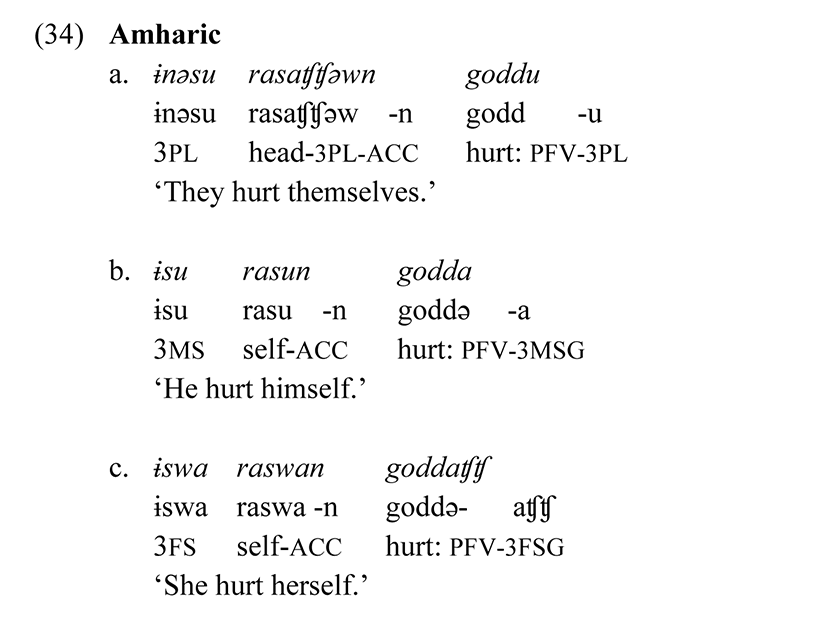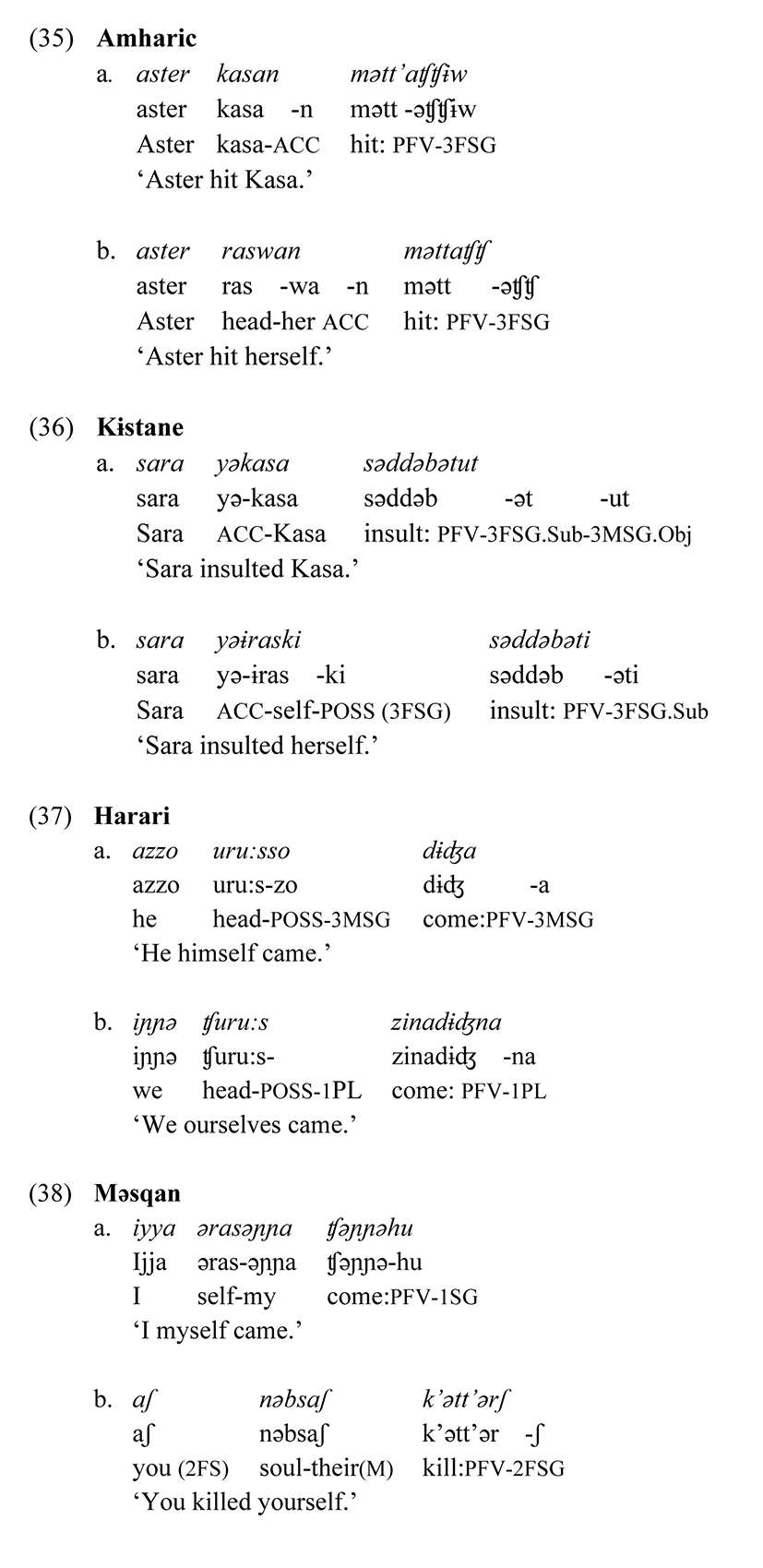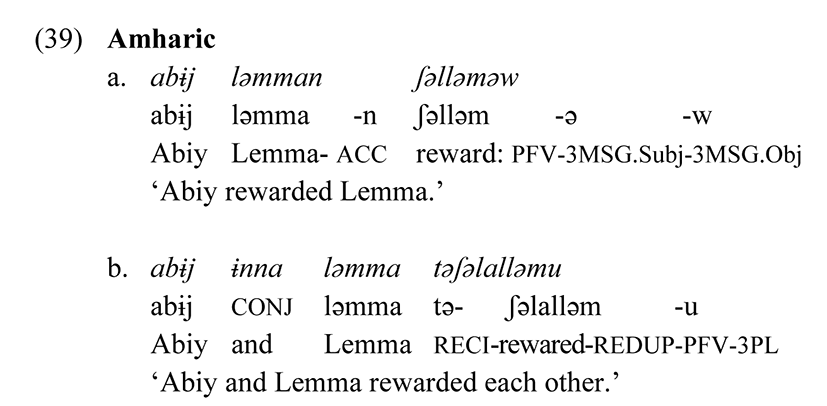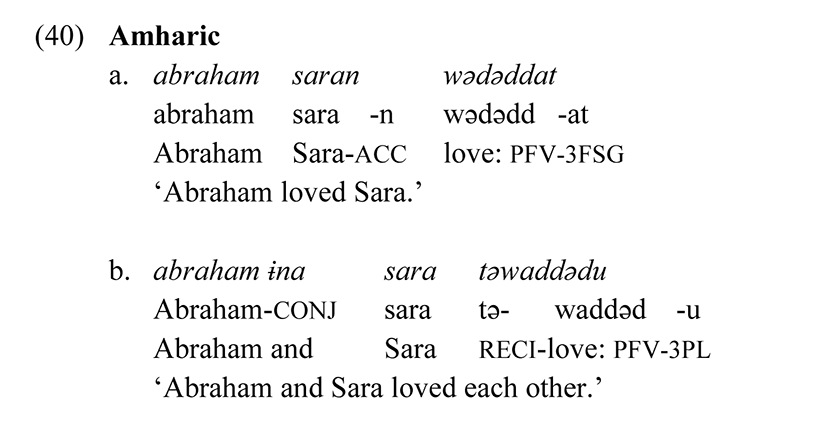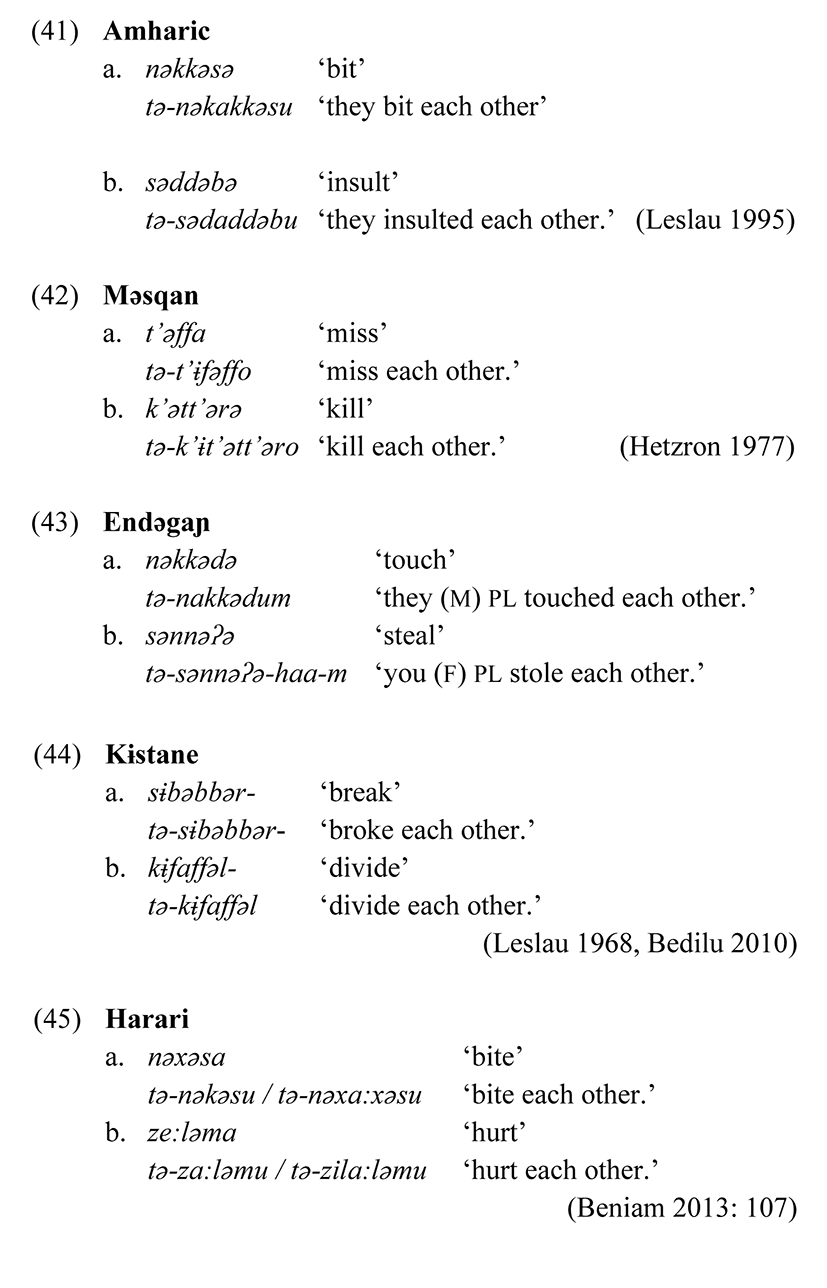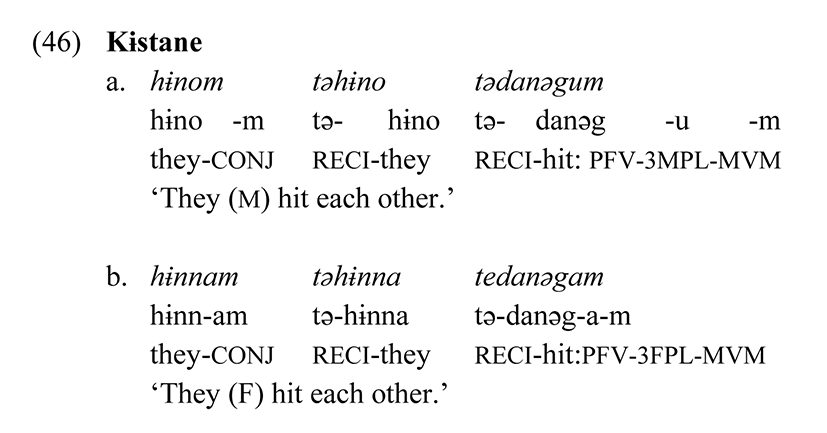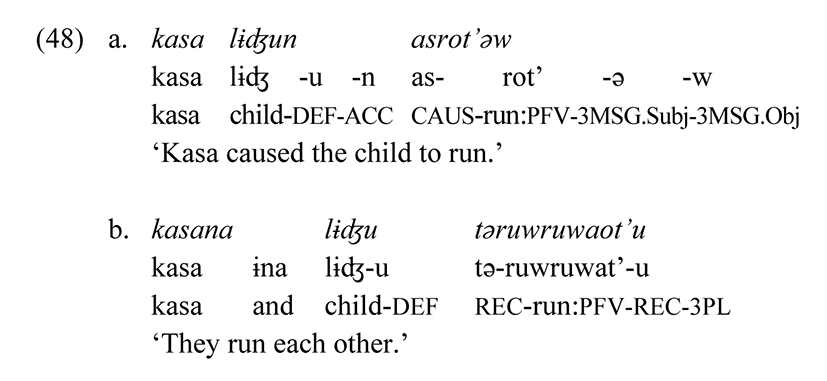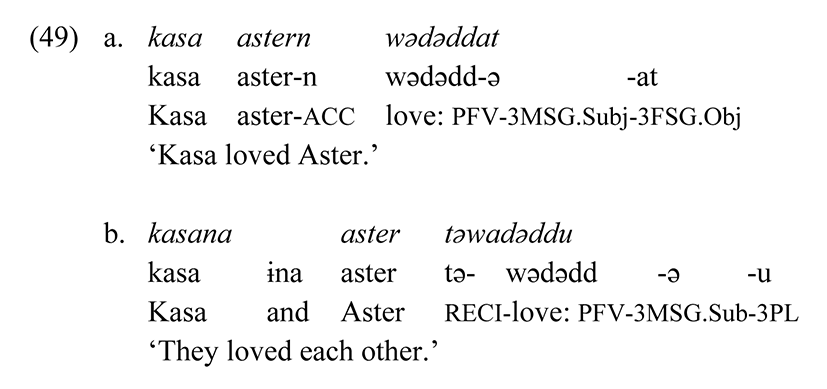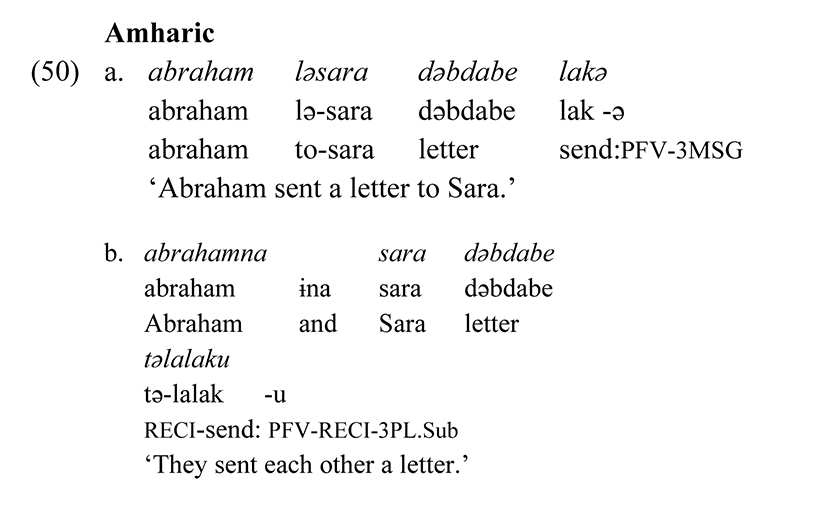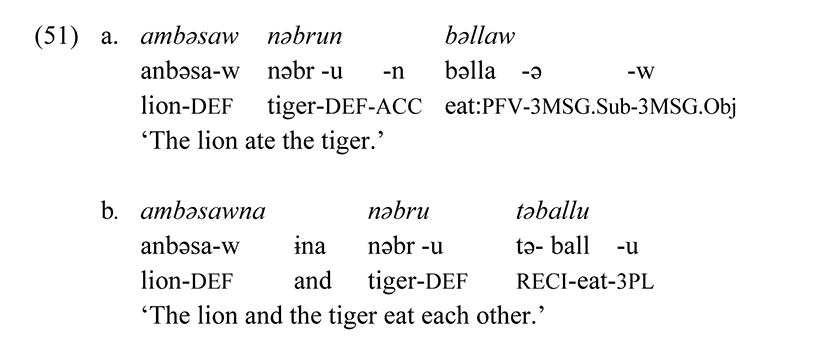1. Introduction
More than 80 different languages, including those from the Semitic, Cushitic, and Omotic families as well as the Nilo-Saharan phylum, are spoken in Ethiopia. The Afro-Asiatic Phylum includes the families Semitic, Cushitic and Omotic (Ethnologue et al. 2022). The majority of northern Ethiopia is home to speakers of the Ethiopian Semitic languages (Ethio-Semitic) (Gideon 1977). Hetzron (1972: 11) divides the Ethio-Semitic languages into north and south. The verbal system’s characteristics serve as the foundation for the division. As a result, Tigre, Ge’ez and Tigrigna are classified as North Ethiopic by Hetzron (1972). South Ethiopic is divided into two subgroups: outer South Ethiopic and transversal South Ethiopic. Muher and West Gurage (Ener, Endəgaɲ, Inor, Gyeto, Ezha, Chaha, Gumer, Gura and Məsqan) comprise Ethiopia’s outer south, while Kɨstane/Soddo, Dobbi/Gogot and Gafat comprise the country’s interior. Transversal South Ethiopic consists of Amharic, Argoba and Harari, as well as East Gurage (Silt’e, Wolane and Zay) languages.
The SESLs1 are morphologically intricate and syntactically head-final. Affixation, particles, and stem patterns are mostly used for tense, aspect, and mood marking. Subject-Object-Verb (SOV) is the order of the sentence’s constituents in the unmarked form when the verbs are in agreement. Perfective verbs have subject agreement suffixes, whereas imperative and jussive verbs have a prefix and a suffix. Furthermore, the SESL is pro-drop languages, making reference to the subject even in the absence of its physical presence. Because the accusative is added after the nominative in SESL, they are nominative-accusative languages.
SESL according to their semantics, verbs can be divided into stative and event verbs (Leslau 1995, Amberber 2002, Beniam 2013, Ousman 2015, Yohannes 2015). However, according to Huddleston & Pullum (2005: 78), verbs can be classified as monovalent, divalent, or trivalent depending on how many arguments they call for. The second form of classification will serve as the study’s driving force. From a purely descriptive standpoint, this particular paper discusses the valency decreasing tools in SESL. Native speakers of the languages were consulted in addition to elicitation for gathering the study’s data.
According to Whaley (1997: 199), a verb can be “manipulated and the morphosyntax of the language can typically increase or decrease valency or realign the grammatical relations of the verb’s argument” and that a verb will exhibit what is known as its core valency when it is in its simplest form. The concept of valency in SESL is discussed in this article in connection to the main typological valency-changing devices used in languages. Based on Comrie’s (1981), Allerton’s (1982), Payne’s (1997), and Dixon’s (2000) typology of valency-changing devices, the valency-changing devices of SESL are analyzed. This study looks into the decline in valency caused by passivization, reflexivization, and reciprocity in SESL.
The descriptive research methodology was used to accomplish the paper’s goals. Materials collected from native-speaking informants and written texts (published and unpublished theses and dissertations) were used to create a sufficient database. Amharic served as the primary working language for the duration of the fieldwork. The comparative and descriptive approaches were used to arrange and analyze the data that had been gathered. The majority of the data were presented in a four-level format, with the informant’s actual utterance appearing on the first line, the underlying hypothetical morpheme-by-morpheme breakdown appearing on the second, glossing appearing on the third, and the denotative translation appearing on the fourth.
2. Valency Decreasing Devices
We will outline the key characteristics of valency-decreasing devices in SESL in this section. The number of argument arguments a verb has and their semantic significance in the prediction determines the verb’s valency. Therefore, valency-changing devices modify a verb’s number of syntactic arguments, the semantic status of its arguments, or both. We shall focus on valency-decreasing techniques in the current work, which include the verb’s passive, reflexive and reciprocal derivations.
A prototypical passive structure is characterized by its morphosyntax and discourse-function. According to Payne (1997: 185), a passive is intransitive but semantically transitive (it has two arguments or participants) for which the following properties hold: Mazengia’s (2014: 125) also uses the phrase since it refers to one of the derivational processes in the grammatical category of voice where a verb is designated for a subject that is typically a logical object. The DO of the clause is usually promoted to the subject position, and the subject may be omitted or optionally demoted to an oblique, adjunct or adverbial role, according to Mazengia’s discussion of passive verb forms.
The personal passive and the impersonal passive are the two main categories of passive structures (Payne 1997: 204). Constructions known as personal passives imply certain individual agents, but either does not express them directly or do so in an indirect manner. The impersonal passive, on the other hand, comes from intransitive verbs. The agent subject of agentive verbs is devalued. Usually, agentive or unergative verbs are the only ones that can use them.
The lexical passive, morphological passive, and periphrastic passive are the three major ways that passive construction can be identified across languages. There is a clear morphological boundary between active and passive sentences in SESL; Usually always, the derivational morpheme t(ə)- designates the passive construction. The verb root has this morpheme appended to it. It only works with transitive verbs. Verbs that are transitive can all be passive. When the agent is not removed, it is realized as a postpositional phrase in which the complement of the preposition bə-, which means “by”, serves the same thematic role as the subject in the equivalent active sentences. In SESL, there is no lexical or periphrastic passive (Hetzron 1977,Baye 1987, Leslau 1995,Bedilu 2010, Beniam 2013, Ousman 2015, Yohannes 2015). The following examples illustrate the issue.
As the aforementioned examples demonstrate, derived verbs are types of verbs that convey an action from the viewpoint of the object, not the subject. In addition, the Kɨstane language has a phonological process that is visible in passive structure and involves the deletion of a vowel from the morpheme tə- when prefixed to perfective verbal stems that begin with vowels, as in (1b) aʧʧ' - ‘close’, which becomes tə-aʧʧ'- ‘be closed’ and retains the vowel /ə/. The outcome is tə- ‘be closed’. Additionally, the vowel of the prefix tə- is assimilated to the first phoneme of the verb stem for an Endəgaɲ verb that starts with a vowel, like in (2b).
In the passive construction, the transitive verb’s object becomes the subject, and the agent is either not present or is situated in an adjunct phrase that is controlled by the prefix bə- ‘by’, as is the case in the example below.
As previously stated, example (6a) has two participants: mushudə ‘the man’ who broke (subject syntactically and agent semantically) and bɨrʧk’o ‘glass’, which refers to the entity that is broken (DO syntactically and patient semantically). The structure in (6b) totally ignores the agent. The passive marker is prefixed to transitive verbs with the stem pattern, which triggers decreased valency. It minimizes the number of participants by one.
The aforementioned structural pattern (6a) and (7a) can be characterized as: Subject + Object + V is the valency structure. The derived passive verb is monovalent.
The /tə-/ stem is commonly used in SESL to express the passive of transitive verbs (Leslau 2000: 94). In addition to serving as a middle and designating the intransitive form of a corresponding transitive verb or a reflexive, the SESL stem, /tə-/, can also serve as a noun. Since these senses overlap, it is not always evident to my informants whether to use the passive, middle or reflexive.
Intransitive verbs take passive forms. However, avalent verbs do not take a passive form since they have no argument that could be decreased by the passive morpheme. Intransitive verbs with one argument take a passive form, and the only argument present is made optional, as in (10) below:
The subject of the active construction in (10) above can either be omitted entirely or introduced by a bə- by the phrase that is optional in the comparable passive construction. We’ve included the SESL equivalent of the bə- phrase in our examples to show how the active and passive constructions are related. This sentence, however, is not valency because it is optional.
The pattern in (10b) above can be described as the Valency Structure of Ø + V (Ø stands for the empty subject and V for the verb). The subject position is filled by thematically empty elements. The passive derived verb is avalent.
When an intransitive verb with a locative such as hed- ‘go’ takes the passive morpheme, the locative occupies the subject position and becomes obligatory in the corresponding passive construction, as shown in (11) below.
The structural pattern in (11a) and (11b) above can be represented as the valency structure of Subject + V. The passive derived verb is avalent.
In SESL intransitive passive have only one subject which can be agentive or non-agentive. Consider the following examples:
As we can see from the example above, (12a) and (12b) are intransitive passives. The subject in (12a) contains a non-agentive subject, whereas (12b) contains an agentive subject. The subject in (12b) is acting under his own authority, whereas the subject in (12a) is acting under the authority of his passion.
Monotransitive verbs which are basically bivalent occur with the passive morpheme as in (13b) below:
Example (13a), (14a) and (15a) is an active sentence. It has an agentive subject lɨʤ ‘boy’; almaz and ɨyya ‘I’ that takes the initial position and is actively involved in the action of beating the dog (the object); Eating dinner and killed a cat. Whereas the passive sentence in (13b), (14b) and (15b) decrease the agent. What the object wuʃa ‘dog’; ʔərbat ‘dinner’ and angaʧʧi‘ the cat’ was in (13a), (14a) and (15a) has become the subject in (13b), (14b) and (15b). The object wuʃa ‘dog’; ʔərbat ‘dinner’ and angaʧʧ ‘cat’ has taken the initial position which was formerly occupied by the subject lɨʤ ‘boy’; Almaz and ɨyya ‘I’. The subject has taken the position of the object wuʃa ‘dog’; Almaz and ɨyya ‘I’ are optional as they may be mentioned or eliminated. It is no longer important to mention who ‘beat the dog’;‘eating dinner’ and ‘killing the cat’ but the action mətta ‘beat’; bəlla ‘ate’ and k’ətt’ərə ‘killed’ are the one that is important as in (13b), (14b) and (15b).
The pattern in (13)–(15) above can be represented as: Subject + V. The passive-derived verb is monovalent.
When trivalent verbs like gəza ‘bought’ t’iggərə ‘sold’ occur with the passive morpheme, two passive constructions are possible as shown in (16) and (17) below.
In examples (16) and (17) above, the arguments that occur after the verb in the active form occupy the subject position in each case. The argument that appears close to the verb in (16a) and (17a) occupies the subject position in (16b) and (17b), whereas the argument that appears second from the verb in (16a) and (17a) occupies the subject position in (16c) and (17c). However, sentences (16c) and (17c) are ungrammatical since an IDO (beneficiary) cannot be promoted to subject status. The structural patterns in (16) and (17) can be described as: Valency Structure:
The subject position in the personal passive is taken over by the object of the associated transitive verb. Therefore, a noun with a patient role happens in the syntactic place of agents, which frequently defers a semantic pattern of the personal passive verb, which may just be valid in definite discourse backgrounds. The subject remains the agent in the verbal affair while it is distressed semantically and the objects stay in their patient role, as illustrated in the following examples:
The passive in (18b) holds extra semantic information in addition to stressing the object mət’af ‘book’. The pattern in (18) above can be represented as: valency structure: object + V. The passive-derived verb is monovalent.
The verbs that are used both intransitively and transitively take the passive morpheme as shown in (19) below:
The passive derived-verb is avalent. In (19), the verb has been used transitively, and two passive constructions in (19b) and (19c) are possible. The structural pattern in (19b) can be described as the Valency Structure Object + V. The pattern in (19c) can be described as the Valency Structure of adposition + Object + V. The passive derived-verb is monovalent.
The verbs that take cognate objects such as zəfən- ‘sing’ when used transitively have only one possible passive construction, as in (20b) below:
The DO nominal of verbs with the cognate object can appear in the passive as the subject or it can be unexpressed. A cognate object is essentially part of the action described by the verb.
The structural pattern in (20b) can be described as the valency structure of Ø + Cognate Object + V. The derived passive verb is monovalent.
From all the examples above, we conclude that the passive is a valency-decreasing device, and it decreases the valency of the basic verb by one. This is because it lays emphasis on the action and deletes particles from the subject.
Impersonal passive refers to a construction in which the subject position in a sentence is empty or unspecified human subject (Siewierska 2008: 116, Kulikov 2010: 8). Simply the subject is expressed by an undefined third person element. “By impersonal …we mean simply that the third person element is not understood to refer to any specific group of individuals” (Keenan & Dryer 2007: 4). In general impersonal passive constructions do not recognize the overt subject. The subject is not specified overtly. There is no special functional difference between impersonal and personal passives as both downplay the centrality of an agent (Payne 1997: 206). Leslau (1992: 433) and Hetzron (1972: 47, 1997: 538) claim that the proto Ethio-Semitic plural maker -u, which later evolved into the non-segmental characteristic labialization w, which attaches to the right-most labializable consonant within a verb, is the source of the impersonal marker. The following are illustrative examples.
As we see (21) and (22) are impersonal passive structures which are derived from agentive intransitive verbs. In all cases the subject position of the corresponding structures is empty. Semantically it occurs as a dummy or without referential agent and is not circumstantially expressed either.
Bedilu (2010: 121) is stated that Kɨstane also, uses impersonal passive extensively and is marked by 3MSG.
Additionally, according to Keenan & Dryer (2007: 4), “by impersonal, we merely mean that the third person element is not recognized to refer to any particular group of individuals”. Leslau (1992: 431) claims that for Gurage languages, the impersonal is created from a regular verb base to which a specific impersonal marker is appended in place of the conventional subject agreement sign. Most Gurage languages are likewise affected by this. The non-segmental feature labialization plus palatalization, or w/y, which results in the labialization of the last root consonant and palatalization of the final root consonant, is the impersonal marker for perfective verbs. The impersonal verb must also be accompanied by a heavy object agreement sign, most frequently the 3MSG object marker -y, as seen in the example below.
The impersonal marker -w/y triggers the labialization of the first root consonants f and m in (24) and the second root consonants k in (25), respectively. The palatalization is lacking in (24) and (25) because in the former the geminated root-final consonant ʤ is already a palatalized consonant. In the latter case since root-final consonant b is a labial consonant it is not palatalized. Note that if two velar consonants are found word-initially and medially, the medial is labialized, while they are found initially and finally the initial is labialized.
In addition, Gurage languages use an impersonal passive form to indicate an agentless passive voice (see Leslau 1992). The stem Hetzron (1977) is altered by the morpheme /-u/ (p. 83). Additionally, a heavy object agreement indication is required to indicate an impersonal verb. This morpheme, however, is a floating morpheme that either labializes the rightmost labializable labial and velar consonants or palatalizes the nearby palatalizable alveolar consonants. The following examples are taken from (26):
In (26a), the labializable consonant occurs as the last radical of the stem and is hence labialized. Furthermore, in (26b) since the labializable consonant is found as the first radical of the stem, the morpheme -u floats and labializes the consonants. Furthermore, the heavy 3MSG object suffix /-y/ is suffixed to the impersonal passive.
A reflexive construction is the one in which subjects and objects are the same entities (Lyons 1968: 373). In other words, Mazengia (2014: 136) states that the reflexive verb form conceptually presents a single entity in an event twice in which the initiator and the endpoint of action are the same. Reflexive devices decrease the semantic valency of a transitive clause by specifying that there are not two separate entities involved; rather one entity fulfills two semantic roles and/or grammatical relations. It can be expressed lexically, morphologically or peripherally/analytically. With lexical and morphological reflexives, the reduction in semantic valency is reflected in syntactic valency. SESL are not lexical reflexive whereas, the morphological reflexive marking is tə-.
In SESLs, morphological realization is realized by using the derivational morpheme tə-, i.e., the passive marker. Only the subject is expressed overtly, but the reflexive morpheme indicates that the subject nominal functions equally as object (DO). Haspelmath & Sims (2010: 239) argue that the reflexive is a valency decreasing device where the agent and the patient are co-referential, therefore can be thought of as performing a single syntactic function. The following triconsonantal verbs are illustrative examples of the reflexive meaning.
As we can see from the examples above, the reflexive is marked by the prefix tə- the conjugation of this derivation is shown in (28b) and (29), whereas, the reflexive marker has the realization tə- with a vowel /ə/, word initially otherwise it is t-. The structural pattern in (28b) can be described as: Valency Structure: Object + V. The derived passive verb is monovalent.
In the morphologically marked reflexive, the naturally bivalent verbs become syntactically monovalent since the DO is not overtly indicated. Thus, the morpheme of the reflexive marker results in the decrease of the syntactic valency of the verb. The semantic valency of the verb also decreased because the action expressed by the verb is not transferred from one participant to another (i.e., a single participant plays two thematic roles).
As can see in the above examples of Məsqan, derived passive verbs can also have a reflexive interpretation inherently.
Generally, in SESL, many naturally transitive verbs are used in morphological reflexive structures without an object (patient) NP; the DO is construable from the reflexive morpheme. A reflexive verb requires an agent and a patient of the same semantic identity, i.e., a reflexive situation is realized when a doer of an action, as an agent, becomes the recipient of that action, as a patient (cf. Payne 2006).
According to Van Valin (2001: 42), in some languages, there is more than one type of reflexive pronoun. In SESL, syntactic reflexive construction is one of these types, as there are two kinds of reflexive pronouns. The first one, the reflexive pronoun, can be expressed by using the bound morpheme preceded by using personal pronouns, as in the following paradigm. A reflexive meaning is also expressed syntactically by means of reflexive (intensifying) pronouns.
To construct a grammatically well-formed reflexive construction the feature matching condition must be satisfied between the antecedent and the reflexive pronoun: If two NPs are assigned the same index (i.e., if they are co-referential), they must much in features like gender, number and person… etc. (Radford 1987: 14).
In the above sentence ɨnəsu, ɨsu and ɨswa are the antecedents of the reflexive pronoun rasaʧʧəw, rasu and raswa respectively. The feature matching conditions is satisfied the antecedent match the reflexive anaphor in person, number and gender. Therefore, these constructions are well formed.
Syntactic reflexivization involves a reflexive pronoun which is expressed in two ways: It can be expressed by combining the word ras ‘head’ literally ‘self’ in Amharic; ursu:s ‘head’ in Harari; ɨras and k’um ‘self’ in Kɨstane; nəbs ‘soul’ or ɨras ‘self’ in Məsqan; (in Endəgaɲ and the possessive pronouns, or it can be indicated by combining the independent pronoun gəgbəgəg ‘I myself’); in Məsqan (intensifier are derived from the noun nəɸs ‘soul’ which has the meaning ‘self’ or its reduplicated form nəɸs-tənəɸs ‘each other’ (lit. self with self) Kɨstane and Endəgaɲ; ɨrsbərs ‘self with self’ in Amharic (Baye 1987, Leslau 1992, Bedilu 2010, Beniam 2013, Ousman 2015, Yohannes 2015). Below we exemplify this:
As we can see the examples, (35a), (36a), (37a) and (38a) are non-derived and (35b), (36b), (37b) and (38b) are derived one that is a reflexive based on the noun ‘self’ to which a possessive clitic is attached which denotes the reference noun and the valency decreased by one.
Reflexive morpheme typically naturally changes bivalent verbs into monovalent ones when they affix to verb stems.
The third valency-decreasing device is reciprocal. The reciprocal verb denotes an eventuality that involves reciprocity between its participants (Siloni 2001: 452). Reciprocal relationships combine subject and object. The clause is very similar conceptually to a reflexive. For this reason, reciprocals and reflexives are often expressed identically. A prototypically reciprocal clause is one in which two participants equally act up on each other, i.e., both are equally AGENT and PATIENT are coreferential, though for different reasons. This process consequently decreases the valency of the verb from four arguments to two in appearance. As a result, each group simultaneously acts as an agent and a patient of the action. Additionally, according to Shimelis, the reciprocal is one of the valency-decreasing mechanisms; The double occurrence of an inverse agent-patient connection indicates four participants, while the real participants are two in a circumstance, which is a common case of valency decreasing. In mainstream SESL, reciprocity is denoted by the letter tə- just like the passive and reflexive verb forms. The following example illustrates this:
According to Leslau (1995: 469) type A or B verbs in Amharic may be converted into type C and preceded by tə- so as to express reciprocity. In order words, as shown in (39), the device that converts any type of verb to a reciprocal is the prefix tə- attached to the verb stem.
As the name implies, participants involved reciprocate with each other in the action expressed by the verb. While carrying out different scholars’ studies on ESL, their studies on SESL observe that the reciprocal appears to be involved in the morpho-lexical operation of verb derivation. The reciprocal derives a one-place predicate from a two-place predicate or, in general, decreases by one the array of arguments of the non-reciprocalized predicate. In Amharic, the reciprocal morpheme is tə-.It is a prefixed verb, as in (40):
Example (40a) is bivalent with an external argument Abraham and an internal one Sara. In example (40b) the external argument Abraham and the internal argument Sara are co-joined and are taken as one entity. The derived verb təwaddədu ‘love each other’ shows the interdependence of action as participants interact in the action expressed in the verb. Thus, (40b) confirms Baye’s (1987) assertion that the syntactic configuration in which the reciprocal appears is largely similar and that it requires a plural or group subject NP. As (40b) illustrates, the subject Abraham ɨna Sara ‘Abraham and Sara’ represents a group of plural subjects. The structural pattern in (39b) and (40b) can be described as the valency structure of Subject + V. The derived passive verb is monovalent.
Reciprocal is a complex verb derivation through the combination of affixation and reduplication. Reciprocal means that two or more people perform something for each other. Reciprocal verbs can be derived from all verb types as long as it is semantically possible. Consider the following SESL examples:
Type A and B verbs can become type C verbs, as we’ve seen in the instances above. The reciprocity is then expressed by the tə- prefix. Do anything against one another, to one another, with another, together, for another, with another, and with each other, according to this phrase (Leslau 1995: 469). The prefix t-, which is appended to the stem in the majority of Ethio-Semitic languages, can produce reflexive, passive, and occasionally reciprocal implications (Moscati 1980: 127). The passive marker t- and the insertion of -a- between the first and second root consonants create reciprocal stems.
The plural person agreement markers appear to indicate the subject of the action in addition to prefixing tə- and adding -a- between the root consonants. However, unlike Amharic, the reciprocal stem in Endəgaɲ cannot be conveyed by a third-person masculine SG subject (Baye 2008: 190).
Reciprocal pronouns are indicated by the morpheme tə-, prefixed to the second element of the reduplicated pronouns, or by tə- attached to verbs to render reciprocity. Observe the examples in (46).
As can be seen in the examples above, the -m is indicated a conjunction morpheme attach to the elements.
Reciprocal refers to a form indicating that the action of the verb is reciprocated, done ‘to one another’. Reciprocal in the language under study is marked by morphemes tə-, which is suffixed to the verb. The following structures help us put this feature into focus:
Avalent verbs such as rain, snow, and wind (metrological verbs) cannot easily take the reciprocal morpheme. This is a weather verb, and no cause can be used to make weather changes. A construction such as (47) below is syntactically correct but semantically not acceptable.
Basic monovalent verbs such as rot’ə ‘run’ do accept the morpheme. This morpheme is requiring monovalent verbs as input well formed as shown in (48) below:
When the reciprocal morpheme is used with a monovalent verb as in (48b) above, one more argument is decreased to the subject position. The valency pattern can be presented as Subject + V. The reciprocal derived verb is monovalent.
Bivalent verbs such as wədəddə ‘love’ only one of the morphemes can be used as shown in (49b) below. A construction where morpheme tə- is used with the verb wədəddə is well-formed as in below.
When the reciprocal morpheme is used with a bivalent verb as in (49b) above, one more argument is added, which is the decrease to the subject position. The valency pattern is written as subject + V. The reciprocal derived verb is monovalent.
Trivalent verbs such as lakə ‘send’ also have their valency decreased by one as shown in (50) below:
The arguments here are Abraham, Sara and dəbdabe ‘letter’ which is three when come to reciprocal morpheme in example (50b) two. The valency pattern in (50a) can be described as Subject + IDO + DO + V. The non-derived verb is trivalent. The valency pattern in (50b) can be described as Subject + DO + V. The reciprocal derived verb is bivalent.
The verbs that are used both transitively and intransitively also pattern with the reciprocal morpheme and have their valency decreased by one. To exemplify this, the verb bəlla ‘eat’ zəmmər- ‘sing’ has been used in (51) below:
In example (51a) the verb bəlla ‘eat’ has been used transitively, while in (51b), it is used intransitively. The valency pattern in (51a) can be described as: Subject + DO + V. The non-derived verb is bivalent. The valency pattern in (51b) can be described as: subject + V. The reciprocal derived verb is monovalent. Generally, reciprocal is one of the valency decreasing devices which tend to suppress arguments syntactically but not semantically. As Ejeba (2020) cited Payne (1997: 172) provides a typological schema of valency affecting transformations that influence transitivity as in Table 1:
| Reflexive | tə- | Those that “merge” controlling and affected participants. |
| Reciprocal | tə- | |
| Passive | tə- | Those that downplay a controlling participants. |
4. Conclusion
The reflexive, passive and reciprocal morphemes decrease the valency of the basic verb by one. The passive is a rather restricted morpheme since it does not occur with the basic intransitive (avalent) verbs unless a locative is present. Of the three morphemes, only one can occur with zero-valent verbs. This implies that all the others, except the passive, require verbs with at least one argument as input. The passive requires verbs with at least two arguments as input. The notions of reflexivity and reciprocity are related in that they are situations where the initiator and endpoint of action are the same. In the case of reflexives, the action is directed towards the one who starts it. As for reciprocals, the subject is plural and the action is mutual, so that each subpart of the subject performs the action on the other and receives the same action back from it. This information is summarized in Table 1 above, which shows the effects of the three morphemes on the valency of the basic verb.

